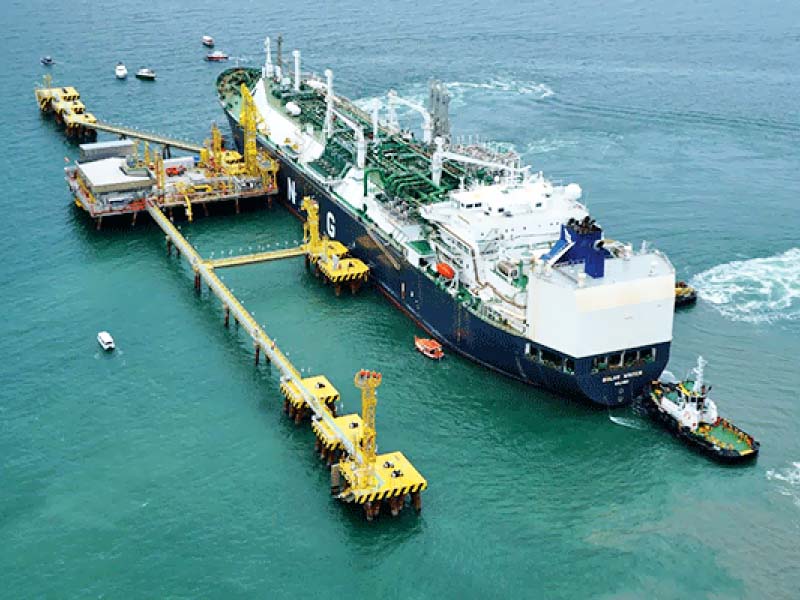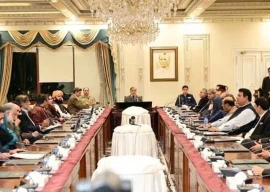
The Cabinet Committee on Energy (CCOE) has rejected a request of liquefied natural gas (LNG) terminal developers for allocating gas transmission and distribution capacity in advance.
The Petroleum Division has maintained that it would be allocating capacity for the short term (three-month window) on a first-come-first-served basis. Any advance long-term capacity allocation would be violating market competition principles.
Gas terminal developers are not sure about the availability of adequate pipeline capacity. A dead end seems to have reached. In the following, we propose a framework which may help bring about a competitive gas market system and remove bottlenecks in the way of new LNG terminals.
The government has announced an LNG terminal policy based on open market under which, contrary to the earlier two LNG terminals, no offtake guarantees or sovereign guarantees will be provided. Almost all risks will be borne by the developers and investors.
However, there is a price for every risk. Risks are to be measurable for investors. High risks may discourage or prevent investments or may increase the price of resulting products and services.
Energy markets and commodities are a lot different from other commodities like sugar, flour, metals, etc. The involvement of intervening infrastructure and cross-subsidies make them quite complicated. Hence, often an elaborate set of market rules are provided and requisite adjustments made. Currently, the gas sector is totally regulated and the whole pricing structure is based on it. Open market is a totally different ballgame. The open market system cannot be brought about in one go.
There would be a transition period that should ensure constant supplies and reasonable prices until the full market framework prevails.
Two LNG terminals are at an advanced stage of planning and there are three more in the planning process. As the projects approach near implementation phase, the realities and limitations emerge.
LNG demand is increasing (while local gas production is decreasing and is expected to reach almost zero levels in the next 10 years) which is reassuring and even enticing for the investors, and is perhaps the only positive side of Pakistan’s market. Pipeline capacity is limited to 1,200 mmcfd, according to Sui companies. The North-South Gas Pipeline is at the planning stage and may take two to three years to complete.
Gas terminals are at an advanced stage of development and can come on line in less than 24 months. Even the North-South pipeline may not be enough beyond 2026-27 and extra gas pipeline capacity may be required. This provides expansion opportunities for the Sui companies and new investors.
Problems provide opportunities, as they say. Sui companies are in the best position to fill the immediate and mid-term gap. However, uncertainties prevent them to do so.
The Petroleum Division recently put forward to the CCOE a proposal for gas market reform and restructuring, and ultimate privatisation of the two Sui companies with the request for induction of a transaction adviser.
The roadmap had been earlier prepared by a World Bank group of consultants. Their proposal revolves around a standard recipe of integrating the transportation function and separating the distribution function for which the existing companies have to be reorganised as smaller distribution companies (DISCOs) or provincial DISCOs.
The privatisation of Sui companies has long been on the agenda of governments. Political and policy issues have prevented it. Also the debate of restructuring first, privatisation later or vice versa has also prevented progress in this respect.
Early action
What to do. There has been a grave LNG crisis and we are still passing through it. In the coming years, the problem would deepen, thus the need for early action. Restructuring and privatisation is uncertain and may consume almost five years for a stabilised operation.
Gas reforms would have to be separated from restructuring of transmission and distribution systems. Tariff structure reforms may be brought about without losing much time in the following manner.
1. Infrastructure (pipes) may have to be separated from gas supply business. This can be easily done. As such, gas losses are a problem for the T&D companies. Their earnings are based on return on assets and reimbursement of variable costs. They will continue to earn this, despite separating the gas supply business. However, gas contract liabilities would have to be transferred to a third entity.
1. Annual revenue requirement of Sui companies may have to be changed to the unit distribution cost (UDC). Ample historical data is available, besides cost-plus arithmetic can continue with some adjustments or can be tied to some inflation index like the Consumer Price Index.
UDC can be revised periodically. There is already a mechanism for allowing UFG losses that may remain as it is. There may be several variants of UDC depending on peculiar situations of customer size.
1. On third-party access (TPA) to the gas pipelines, a three-month window on first-come-first-served basis appears to be contradictory with the take-or-pay requirements. It can be one at a time, not both. It can be take and pay at a lower capacity utilisation rate of 60% which may enhance the pipeline tariff. Take-or-pay rates are usually computed at 80-90% capacity utilisation.
2. Local gas may have to be reserved for the residential and commercial sectors and small industry for which pipeline capacity may be reserved and the remaining left for the bulk consumers like industry, electricity, fertiliser, etc. Government companies may be allowed to retain this business initially.
3. Except for the residential and commercial sectors, cross-subsidy may have to be replaced by a taxation or surcharge system and a balancing fund is to be created to adjust excess surcharge with the deficit.
4. Bulk consumers like industries, power, CNG and fertilisers may be given to private LNG suppliers. Subsidies to the fertiliser/ agriculture sector may have to be separated from the gas sector or financed from the proposed tax fund.
CNG price may be linked to the petrol price and announced in line with the petrol and diesel rates.
1. Gas terminals should also have a terminal tariff. Fortunately, data from the regulated terminal is available and the same can be charged for the new terminals.
The rate of 44 US cents per mmbtu of existing LNG terminals, although regulated, is only notional. Actual rates have varied and have gone up to $2 in the months when capacity utilisation has been less.
Developers may be allowed to keep 30-50% share for their own gas supplies. The rest should be available to other gas importers and traders.
1. Imported LNG can be priced on the basis of existing oil import price regime. Petroleum product import is open to licensed oil companies and is priced on the relevant price index, Platt or otherwise. Same can be done with LNG import price. It can be linked with JKM, JERA or a combination of both.
Importers can earn profit based on their efficiency and network linkage below the JKM index. There could be free imports under bilateral price agreements for non-regulated sectors like industry.
1. Private traders/ gas retailers may be licensed. There may be a last resort supplier government company which may import LNG filling the market gap as it may emerge from time to time. All legacy import contracts may be transferred to this company. Its deficit can be financed by the tax fund. The aforementioned framework would remove many uncertainties in establishing LNG terminals and in the introduction of a competitive gas market.
The proposed tax fund replacing cross-subsidies is not something new. Throughout Europe, energy taxes are used for supporting various energy causes such as green taxes.
Privatisation, although desirable, is not a prerequisite for such a scheme of things. A simulation of the proposed model would be required to implement it.
The writer is former member energy of the Planning Commission
Published in The Express Tribune, February 8th, 2021.
Like Business on Facebook, follow @TribuneBiz on Twitter to stay informed and join in the conversation.


































-(1)1714378140-0/AliAminMaryam-(4)-(1)1714378140-0-270x192.webp)

1714370039-0/ojwilson-(1)1714370039-0-270x192.webp)







COMMENTS
Comments are moderated and generally will be posted if they are on-topic and not abusive.
For more information, please see our Comments FAQ